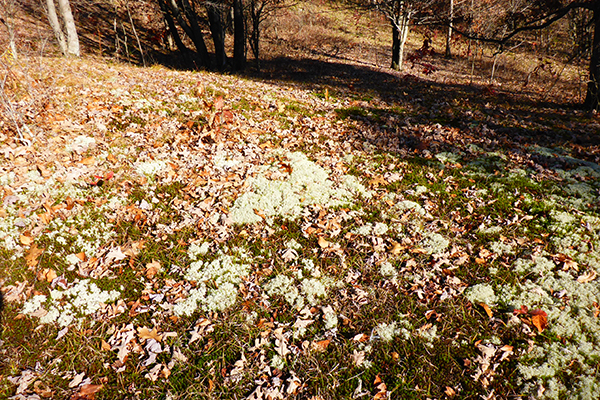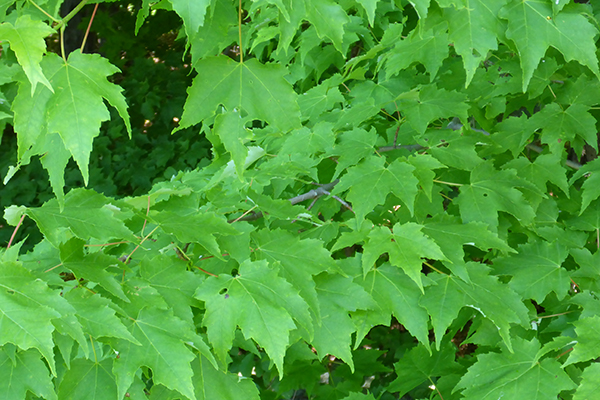On a nice late fall day I wandered back to one of my favorite spots in a local nature preserve. As I sat looking out over the valley where only the oaks still held their leaves, I noticed the carpet of reindeer lichen and moss around me.
On a nice late fall day I wandered back to one of my favorite spots in a local nature preserve. As I sat looking out over the valley where only the oaks still held their leaves, I noticed the carpet of reindeer lichen and moss around me.
This is a former gravel pit being reclaimed by reindeer lichen (pale gray-green) and moss (dark green).
It might seem barren and unproductive, but the natural world is hard at work here, breaking down bare rock and earth into more usable forms. Even in the bleakest places, organisms are surviving, and in the process they’re creating a more livable place for the next group of plants and animals that will live in these woods.
Lichen is one of those organisms. Rather, it’s two of those organisms. Lichen is an amazing combination of a plant (algae) and a fungus that live together and help each other out. You might say they take a “likin” to each other. The fungus gives the lichen its structure and supplies a foothold so both it and the algae can stay in place. In exchange, the algae uses sunlight energy to create a food supply for the fungus, since fungi can’t make their own food.
Lichens come in many shapes, sizes and colors, and you can find them growing in all kinds of places. You’ll commonly spot them on rocks, exposed soil, and tree bark. Sometimes you can find them on roof shingles and even old cars.
A close-up of the reindeer lichen. The pale white is the lichen, and the green is moss (a separate plant, but another great colonizer of rocks).
Tree bark is a common place to see lichen growing. The lichen doesn’t hurt the tree, so there’s no need to try to remove it.
For a small, humble algae and fungus combo, lichen does some pretty cool things in the natural world:
- It secretes an acid that breaks down rock and starts building soil that other plants will eventually use to grow.
- Hummingbirds commonly use lichen when building their nests.
- Especially in northern climates, lichens are an important winter food source for many plant-eating animals, including deer and moose.
- It traps air pollutants such as heavy metals and sulfur, at least up to a point. Lichen is also sensitive to air pollution, so seeing it is an indicator good air quality.
Lichen’s presence is one sign of a healthy woodlot, because it can grow where many other plants can’t. If you want to learn other signs of a healthy woodland and discover how healthy your woods are, check out the MyWoodlot Activity Perform a Woodlot Health Checkup.








